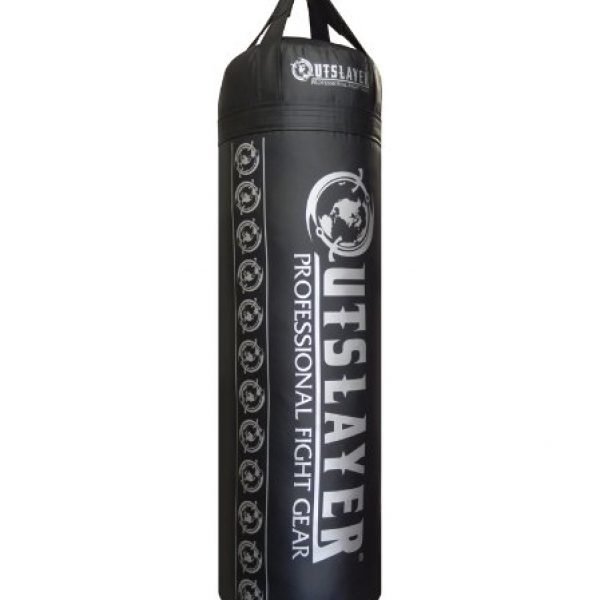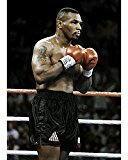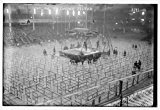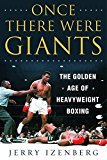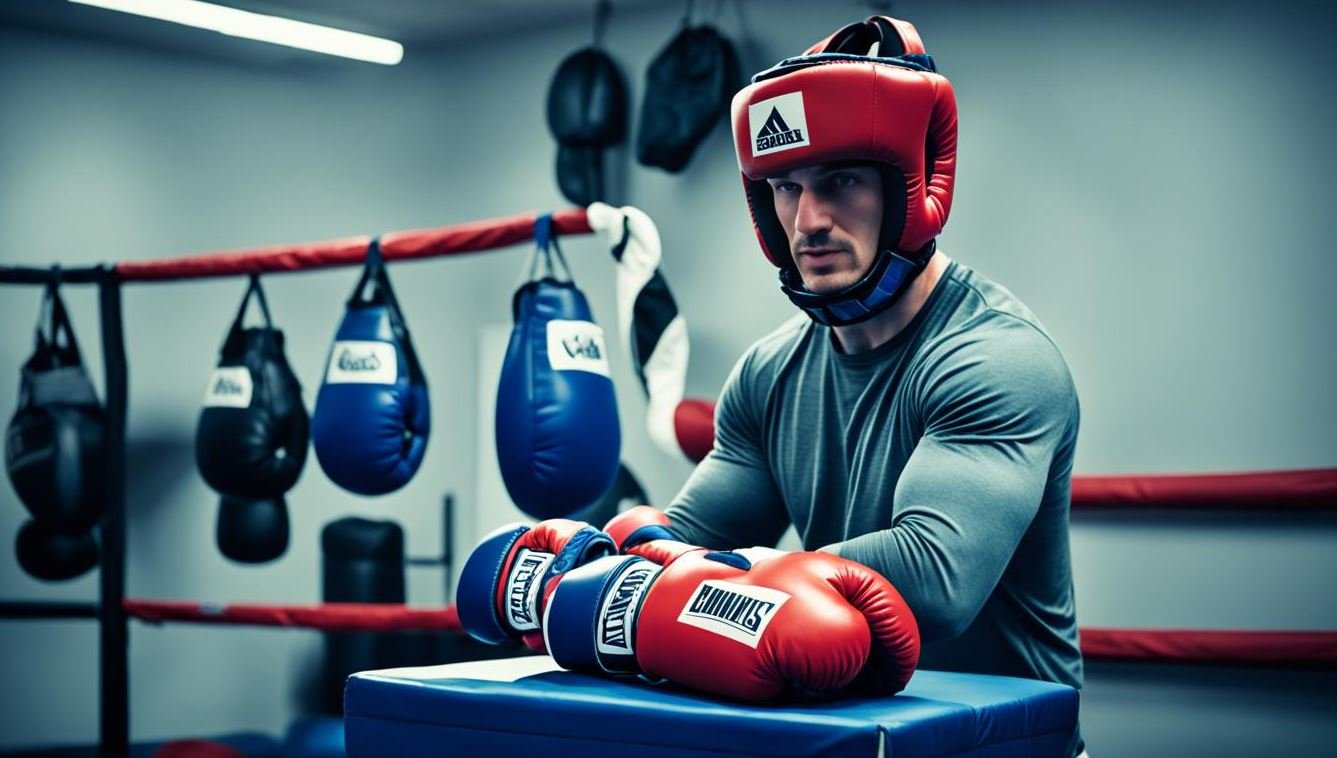
Boxing gear and equipment works hard for boxers at every level. Trainers match glove weights from 10 to 18 ounces with your training goals. Your safety and growth start with the right gear. Pack your gym bag with gloves, hand wraps, shoes, and punching bags for complete training.
Quality gear keeps you safe and makes each practice better. Your head stays protected during sparring with the right headgear and mouthguard. Strong gloves and tight hand wraps keep your hands and wrists safe through thousands of punches.
Watch your footwork shine in Hayabusa Pro Boxing Shoes, Talon Boxing Shoes, or Strike Boxing Shoes. Your feet grip the canvas and move fast with these boxing shoes built for balance and speed.
Build power on heavy bags, cobra bags, and double-end bags. Jump rope rounds build your stamina and coordination just like the pros. Your skills grow with each training session on this gear.
Key Takeaways:
- Boxing gloves: Pick your glove weight from 10 to 18 oz based on what you want to learn that day.
- Hand wraps keep your hands and wrists strong through every punch you throw.
- Specialized boxing shoes make your footwork quick and balanced in the ring.
- Punching bags and jump ropes build your power, speed, stamina, and smooth movement.
Smart boxers spend money on good gear because it pays off in safety and skill. Your boxing journey grows stronger with the right equipment.
Protective Gear: Keeping You Safe in the Ring
Your first step into the ring starts with staying safe. Pro boxers trust quality headgear, mouthguards, and groin protectors to protect against hard hits. Each piece of safety gear shields you from career-ending injuries and keeps you boxing longer. Smart fighters check their protective gear before every session - your future in boxing depends on it.
Headgear for Ultimate Protection
Your headgear blocks hard punches and keeps your head safe. Choose between open-face gear for clear sight lines or cheek guards that stop cuts. Open-face styles let you see everything and move your head fast. Full cheek protection stops punches from marking up your face.
Your headgear fits right when it stays still and feels good. TITLE Boxing makes sizes from Youth Medium to Adult, so your headgear fits just right.
Mouthguards: Protection for Teeth and Gums
Your mouthguard keeps your teeth, gums, and jaw safe from big punches. Pick from three types: custom fits from your dentist, boil-and-bite styles you shape at home, or ready-made stock guards. Try the Power Gel Sports Mouthguard at $20.00 - it guards well and fits comfortably.
Groin Protectors: Essential for Male
Fighters Male boxers need groin protectors to block low hits and stray punches. Choose your guard based on your level:
- Groin/Ab protectors fit close and work great for new boxers and youth fighters.
- Deluxe Groin/Hips guards cover your sides and protect your hips too.
- Full Groin/Ab/Hip Protectors wrap you in safety - pro fighters wear these because they block everything.
Groin protector prices vary by protection level and size. For example, the Competition Light Groin Guard costs $35.00, while the Pro Leather Abdominal Guard is $150.00.
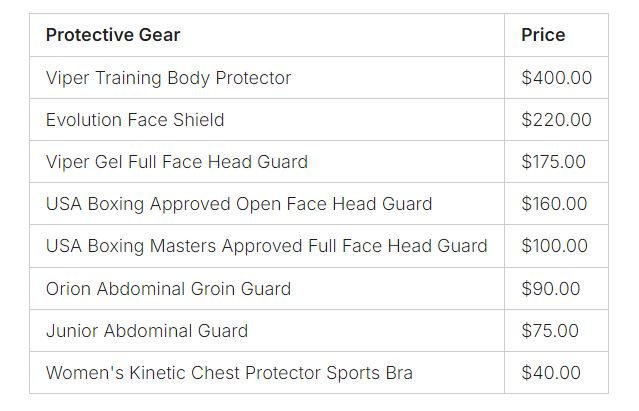
Buying quality boxing equipment is an investment in your safe future within the sport. Do your homework, then go for the best equipment you can buy with your money and in your fighting style. Never compromise on your protective gear.
Boxing Gloves: Choosing the Right Fit and Style
Pick boxing gloves that make your punches safe and strong. Gloves come in different weights and close up in different ways. Learn what each type does best before you buy.
Different Glove Weights and Their Uses Boxing gloves weigh from 8oz to 20oz. Your size, skill, and training style point you to the right weight. Here's what works best:
- 8oz to 10oz gloves: Pro fighters wear these in matches. Punches fly fast and land right on target.
- 12oz to 14oz gloves: Perfect mix of speed and safety for hitting bags and pads.
- 16oz to 18oz gloves: Extra padding makes these great for sparring. You and your partner stay safe.
- 20oz gloves: Big padding protects your hands during hard training sessions.
Remember - these tips help guide you, but your perfect glove weight might change based on what feels right or what your coach sees in your style.
Lace-up vs. Velcro Gloves Your gloves need to close up tight. Pick between laces or Velcro straps.
Lace-up Gloves: Fighters love how snug these fit, but you'll need help putting them on and taking them off.
Velcro Gloves: Quick strap makes these easy to use alone. They might not lock in as tight as laces.
Pick your glove style based on how you train and what feels right to you. "Buy gloves that fit right and match your training. Try different pairs until you find your perfect match." — Coach Mike, Elite Boxing Gym"
Hand Wraps: The Foundation of Hand Protection
Of all the equipment needed to become a boxer, boxing hand wraps are among the most important. They serve as protection for your hands, supporting both the wrists and the knuckles. There are innumerable choices at hand, depending on one's needs and preference.
Wraps come in lengths like 120" and 180". One of the most popular is the 180" wrap due to its full support. It covers hands, wrists, and knuckles that provide full protection to make training and fights much safer.
While picking hand wraps, a number of factors have to be kept in mind:
Material: Choose wraps with a stretch cotton blend for comfort and durability.
Wrist support: Look for wraps with rubberized wrist straps that will keep your wrist stable.
Breathability: Ensure the wraps allow your skin to breathe to prevent sweating and discomfort. Closure by Velcro makes it very easy to slip on the wraps and adjust them. To get the best protection, learn how to wrap your hands properly.
This is how to do so:
- Always start with clean hands.
- Wrap at the wrist, leaving the thumb free, then crossing at the back of the hand and the palm, covering each knuckle.
- Provide extra support by wrapping around the wrist.
- Secure with the Velcro closure.
Wrapping your hands right before you train or fight is the most crucial step in injury prevention and having healthy hands.
Clean your boxing hand wraps after each use. This will stop the growth of bacteria and give your wrap a much longer life. Experiment with wrap length and style to see what works for you best.
First protect your hands, then use good hand wraps, and you will enjoy the sport of boxing so much more. This will also decrease your risks for hand injuries.
Boxing Footwear: Achieving Optimal Mobility and Stability
Your moves in the ring depend on what's on your feet. New boxers start with running shoes but learn fast why boxing shoes work better. Boxing shoes help you glide, cut angles, fake moves, and shift weight smoothly.
The Importance of Boxing Shoes
Good shoes keep you steady and strong in the ring. Boxing shoes protect your ankles when you turn and move fast. Low-tops feel light, mid-tops wrap your ankles, and high-tops lock everything in place.
Choose your shoe material carefully. Real leather holds up through years of training but adds weight. Light synthetic materials let your feet dance around the ring.
Tough materials handle hard training and fight nights without breaking down.
"Every serious boxer needs real boxing shoes. The right shoes give you the support and quick moves that build confidence in the ring."—Mike Tyson, former Heavyweight Champion
Key Features to Look for in Boxing Shoes
Look for these things in best boxing shoes:
- Rubber soles with grooves that grip and turn smooth
- Mesh panels that let your feet breathe
- Light build for quick moves
- Snug fit that supports your ankles
- Strong materials that last
Boxing shoe soles grip the canvas and help you turn fast. Your shoes need to fit tight for better control when you move.

Good boxing shoes change how you fight. You move faster, stay balanced, hit harder, and flow better around the ring. Since footwork makes or breaks a boxer, the right shoes help you train better and win more.
Workout Equipment: Properly Developing your Skills
As a boxer, success in the ring is more than technique or strength. The right type of practice equipment can be used by any boxer to his advantage at any level. From punching bags to focus mitts to jump ropes, every tool is designed to improve your speed, power, or endurance.
Punching Bags: Heavy Bags, Speed Bags, and Double-End Bags
You must be aware that punching bags form the crux of every boxing training. Heavy bags develop strength, power, and technique; speed bags enhance hand-eye coordination and timing; and double-end bags simulate opponent movements that sharpen your defense and combination punching.
Focus Mitts and Punch Pads
Focus mitts and punch pads are very important for training. They help you train strikes and combinations with a partner, thus increasing your accuracy and precision. Get high-quality gear that is well-padded to care for your hands and wrists.
Jump Ropes for Cardio and Coordination
Jump ropes raise cardio and coordination; this incorporation in your routine enhances your stamina, footwork, and overall physical fitness. Choose a rope that fits your height with comfortable handles to be used during a lengthy workout.

One cannot overstate the importance of cross-training in developing strength and speed. Always practice slipping and ducking during a visit to the gym to develop your defensive skills.
The second determining factor is good, quality boxing gear. A wide range of tools used in training can make one outstanding in the ring. Whichever the level one is—in the beginning or a pro—the right equipment can set one on the path to great boxing.
Boxing Gear and Equipment: Essential Investments for Every Fighter
A good boxer needs the proper gear to support his drive. That's not cheap, but good gear is an investment in your career by enhancing performance and avoiding injuries.
Of course, gloves are important and represent more than 40% of the market. Look for durable gloves from Everlast, Venum, or Hayabusa Fighter to help you in great quantum steps through your training and fights. Gloves cost $30 for beginners and over $150 for top brands like Cleto Reyes and Winning.
Not to forget, there are hand wraps. They are very vital during training since it's where your hands are protected. High-quality and comfortable hand wraps shall avoid injuries and keep form right.
This will also include protective gear like headgear, mouthguards, and groin protectors. It may not be glamorous, but it does keep you safe. Quality protective gear will give you the confidence to train effectively and compete with confidence.
"Boxing isn't just about throwing punches; it's about having the tools to perfect your craft. And that's with the investment in important gear and apparatus, which can be looked at as a commitment to your success and longevity within the sport."—Freddie Roach, legendary trainer
Tools like punching bags and jump ropes increase your skill level since they provide training in power, speed, and accuracy for the person. Choose according to space, budget, and goals for good value.

It's more than money when one invests in boxing gear; it's a question of decision-making for development and success. Quality gear from trusted brands will give you no problem facing whatever the ring may offer.
How to Look After Your Gear - Extending the Life of Your Equipment
Quality gear keeps you safe and helps you box better. Just like a car needs oil changes, your boxing gear needs care. Take care of your gear and save money while keeping your training gear strong.
Cleaning and Storing Your Gloves and Wraps
Clean gloves and wraps stay fresh and work better. Wipe your gloves with a damp cloth right after training. Sweat and dirt break down gear fast if you leave them sitting.
Grab some Lysol Multi Surface to kill the germs deep inside your gloves. Wash your hand wraps in cold water with mild soap - stick them in a mesh bag so they don't tangle up.
Good storage makes gear last twice as long. Let everything dry in fresh air after cleaning. Never leave wet gear sitting in your gym bag - you'll get mold and bad smells fast. Store your gear in bags with air holes.
Replacing Worn-out Equipment
Even with great care, gear wears out. Look over your gear often - check for cracked padding, loose threads, or any damage.
Old gear puts you at risk and holds back your training. Time to buy new when you see heavy wear. Try the "Select" Boxing Collection - they back their gear with a 180-day warranty.
Buy fresh gear before your old stuff falls apart. Safe, strong equipment keeps you protected and ready to train hard.
FAQs
What are the most important pieces of boxing equipment for a beginner?
Start with gloves, hand wraps, a mouthguard, and a heavy bag. These basics keep your hands and teeth safe while you learn to throw punches right.
How do I choose the right size and weight for my boxing gloves?
Pick your gloves based on how you'll use them. Hit bags and pads with 10-14 oz gloves. Sparring needs heavier 16-18 oz gloves. Try them on - they should fit snug but comfortable.
Are hand wraps really necessary under my boxing gloves?
Your hands need hand wraps. They support your knuckles and wrists, spreading out the force when you punch. Never train without wraps under your gloves.
What should I be looking out for when buying boxing shoes?
Look for light shoes that let your feet breathe and support your ankles. The soles need good grip for quick moves. Hayabusa makes solid shoes that work for both new and pro boxers.
How often should I replace my boxing gear?
Your training schedule and gear quality tell you when to replace stuff. Your gloves and wraps need changing when you see wear, usually after 6 months of hard training. Keep headgear and cups until they show damage - most last a year or two. Your shoes tell you when they're done based on how often you train.
Keep your gear fresh - wipe down gloves after training and wash those wraps. A little soap works fine, just make sure everything dries out good. Pick a gym bag with mesh sides so air gets in. Look your gear over now and then - replace anything that looks beat up.





